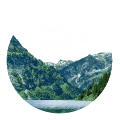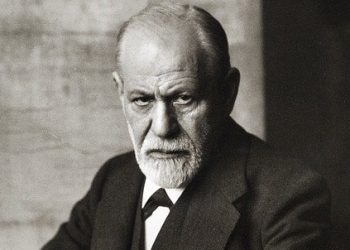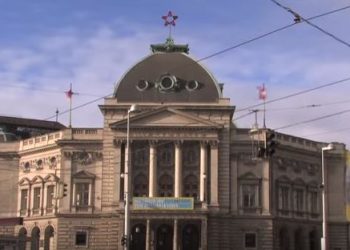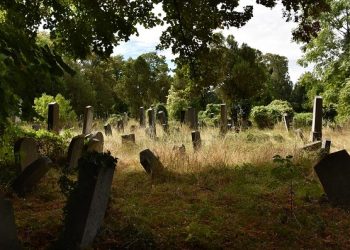The famous residential building he designed is named after him, Hundertwasserhaus, and is located in Vienna’s third district. Opposite it is the visitor center called Hundertwasser Village. In addition, a 5-minute walk from Hundertwasser Village, there is a museum he designed that houses a unique and comprehensive exhibition of his various works. This museum is called Kunst Haus Wien.
Even if you’re not a big fan of architecture, it’s worth seeing Hundertwasser’s impressive design skills. It’s something you don’t see every day. The Hundertwasser House and Village are open all year round, and admission is free. Admission to the museum requires a fee.
In this article, you can read about the following topics:
- Summary of his life and work
- The Hundertwasser House
- The Hundertwasser Village
- Kunst Haus Wien
- Other places in Vienna designed by Hundertwasser
Who was Friedensreich Hundertwasser?
The man who went against the conventions, the hater of the straight line.
Friedensreich Stowasser (he only changed his name to Hundertwasser later) was an Austrian-Jewish artist, painter, sculptor, and architect. He was born in Vienna in 1928 to a Jewish mother and a Christian father. During World War II, he pretended to be Christian and thus managed to survive, while most of his family on his mother’s side did not. He spent most of his life in New Zealand, where he also passed away in 2000.
He was a natural talent. He had no formal education in art, but his works continue to amaze and impress to this day. He began his artistic career as a painter but slowly began to focus on architecture, writing, and public speaking. The architect Josef Krawina joined Hundertwasser in his unique work and helped him realize his ideas. Hundertwasser is considered one of Austria’s greatest artists of the 20th century. His main legacy is the impressive buildings he designed, which have long since become part of Vienna’s cultural wealth.
The Hundertwasser House
The famous house built by Hundertwasser is located in Vienna’s third district. It was built between 1983 and 1985. The house was built according to the architect’s ideas, and therefore, you won’t find any straight lines in the building (he claimed that a straight line is the work of the devil). The exterior walls are colorful, the floor is curved and wavy, the roof is covered with soil and grass, and inside the building, no less than 250 bushes and many trees grow, some even emerging from the windows. This is his unique style. The house has 53 apartments, 4 offices, 16 private balconies, and 3 shared balconies.
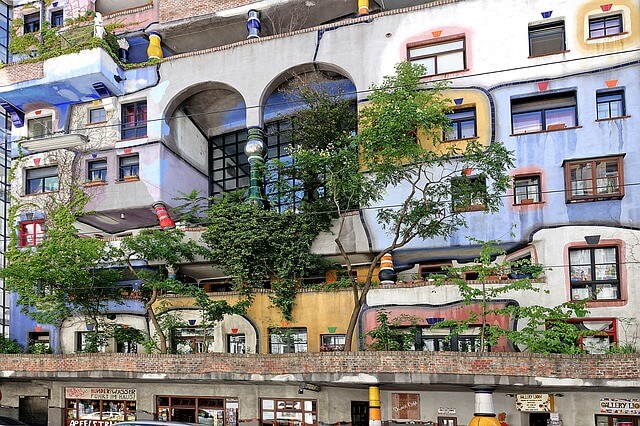
Hundertwasser did not charge for his wonderful work, claiming that it was worth it for him to save the place from another ugly and standard building. Today, this house is considered one of the most beloved houses in Vienna, and about one million tourists visit it every year. The house can only be viewed from the outside.
Small tip: In the café Kunst und Cafe located on the ground floor of the building, you can watch a film featuring the architect, who conducts a virtual tour of the house he built.
The Hundertwasser Village
Opposite the Hundertwasser House is another building designed by the great architect. This building was once a tire factory, but it underwent a drastic change inside and out between 1990 and 1991. The building is now called “Hundertwasser Village,” and it serves as a center for visitors who come to see the great architect’s masterpiece. The building was designed like a shopping center with several shops and a bar. In its center, there is a square known as the Village Square. The place is open 365 days a year, and admission is free.
Essential information for visiting the Hundertwasser House and Village
You can only view the Hundertwasser House from the outside. Opposite it is a visitor center, Hundertwasser Village, which is open all year and admission is free.
How to get there?
You can get close to the house by taking tram number 1. Get off at the Hetzgasse station. From there, it’s a 2-minute walk.
Address: Kegelgasse 36-38, 1030 Wien
Map:
Kunst Haus Wien
The building where this museum is located was designed by the architect himself, and it contains the only exhibition in the world that centralizes his works of art. The museum opened to visitors in 1991. The museum is a 5-minute walk from the Hundertwasser House, making it a wonderful addition for those who love the unique artist.
Essential information for visiting the art house:
Opening hours: Every day from 10:00 AM to 6:00 PM Admission fees:
- Adults: €15
- Seniors: €12
- Students (under 26): €6
- Youth (6-19): €6
- Children (under 6): Free
- Family ticket (2 parents and up to 4 children under 19): €25
- Guided tour: €5 additional to the entrance fee.
It’s possible to purchase tickets online from the official website.
The museum is accessible to people with disabilities.
How to get there?
You can take the subway to the Wien Mitte – Landstrasse station (green line U4 or orange line U3) or the Praterstern subway station (red line U1 or purple line U2). From both stations, continue on tram O and get off at the Radetzkyplatz station. From there, the walk to the museum is about 4 minutes.
Map:
Other places designed by Hundertwasser
Another less-known building is located in the north of the city, right outside the Spittelau subway station (U4 and U6 lines stop there). This is a power plant building that deals with converting waste into energy. The building is interesting and very different from the landscape, as befits a building in the unique style of the wonderful artist.
If you are an art lover, make sure you don’t miss a visit to the Museum of Art History or the Albertina Gallery!

